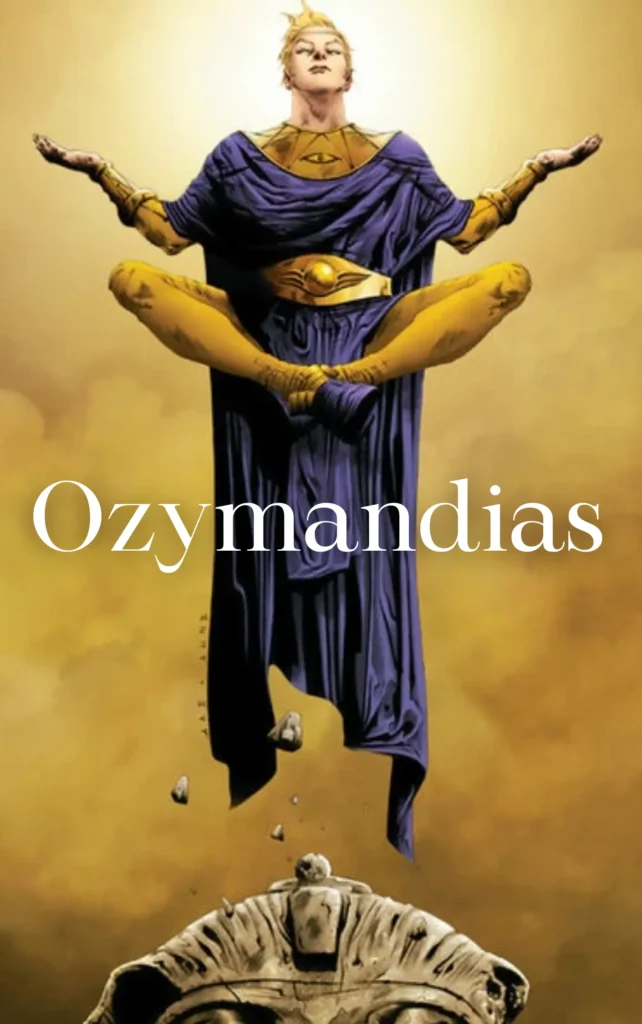
About Poem- Ozymandias
| Poem Title | Ozymandias |
| Author | Percy Bysshe Shelley |
| Genre | Sonnet |
| Publication date | 1818 |
| Speaker | A traveler |
| Setting | A desert |
| Subject | The ruins of a statue of Ozymandias, an ancient Egyptian pharaoh |
| Themes | The passage of time, the vanity of human power, the impermanence of all things |
Ozymandias Poem
I met a traveller from an antique land,
Who said—Two vast and trunkless legs of stone
Stand in the desert. . . . Near them, on the sand,
Half sunk a shattered visage lies, whose frown,
And wrinkled lip, and sneer of cold command,
Tell that its sculptor well those passions read
Which yet survive, stamped on these lifeless things,
The hand that mocked them, and the heart that fed;
And on the pedestal, these words appear:
My name is Ozymandias, King of Kings;
Look on my Works, ye Mighty, and despair!
Nothing beside remains. Round the decay
Of that colossal Wreck, boundless and bare
The lone and level sands stretch far away.
Watch Full Poem Summary on YouTube
Ozymandias- Summary & Analysis
Ozymandias is a sonnet written by the renowned English Romantic poet Percy Bysshe Shelley, first published in 1818. The poem is often considered one of the finest examples of Shelley’s skill in capturing the transitory nature of human power and the inevitable decline of empires. It is a short but poignant work, comprised of just 14 lines. Here’s a stanza-wise summary of the poem:
Stanza 1: The poem opens with the speaker describing a traveler who encounters a vast, desolate desert. The traveler narrates that he once met a traveler from an “antique land,” likely referring to ancient Egypt, as the poem’s title, “Ozymandias,” suggests.
Stanza 2: The traveler goes on to say that the traveler from the ancient land told him about a colossal, ruined statue that he came across in the vast, empty desert. This statue is a monument to a great and powerful ruler named Ozymandias.
Stanza 3: The description of the statue is given in detail. It depicts the legs of a once-mighty and powerful ruler, standing on a pedestal. The sculptor who created this statue skillfully conveyed the sense of the ruler’s authority and power in the facial expression and the way the legs are positioned.
Stanza 4: The inscription on the pedestal is introduced. It reads, “Look on my Works, ye Mighty, and despair!” This line is significant as it reflects Ozymandias’s arrogance and the belief that his power and achievements were so immense that others should be envious.
Stanza 5: However, the traveler points out the irony. Instead of a mighty and thriving empire, the surrounding area is now a vast, empty desert. There is nothing around the statue but the “lone and level sands” that stretch far and wide. The once-prosperous civilization has crumbled into dust and oblivion.
Stanza 6: The poem’s final stanza reveals the central message of the poem. The inscription’s arrogant command to “despair” is a stark contrast to the reality of the scene. Ozymandias’s works and empire have vanished, and all that remains is the shattered statue and the empty, unchanging desert. The poem serves as a powerful commentary on the impermanence of human achievements and the fleeting nature of power and glory.
FAQs
Who was Ozymandias?
Ozymandias was a powerful ancient Egyptian pharaoh
Was Ozymandias good or bad?
Ozymandias was a complex figure, both good and bad. He was a powerful ruler who built great things, but he was also arrogant and boastful. His legacy is ultimately fleeting, as his empire has fallen into ruin.
Why is Ozymandias poem so famous?
Ozymandias is a famous poem because it is a powerful meditation on the passage of time and the vanity of human power.
Is Ozymandias based on a real person?
Yes. Ozymandias is based on Ramesses II, an ancient Egyptian pharaoh.
What is the moral of the poem Ozymandias?
The moral of the poem Ozymandias is that all things are impermanent, even the greatest empires and the most powerful rulers. The poem is a reminder that we should not be too proud of our accomplishments, because time will eventually destroy everything.
Why did Shelley write Ozymandias?
Shelley wrote “Ozymandias” to show that even the most powerful empires and individuals will eventually be forgotten.
Why does Ozymandias build a statue of himself?
Ozymandias builds a statue of himself to commemorate his power and achievements, and to intimidate his subjects and rivals. The inscription on the statue, “Look on my works, ye Mighty, and despair!”, is a direct challenge to other rulers, daring them to surpass his accomplishments.











